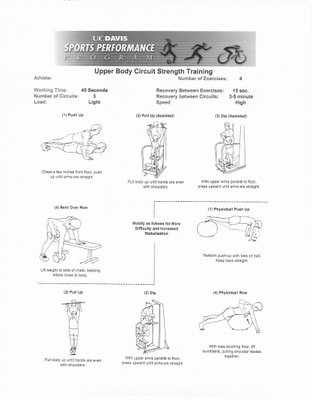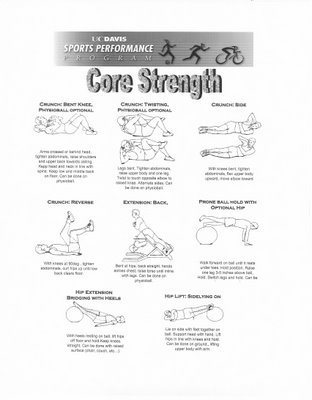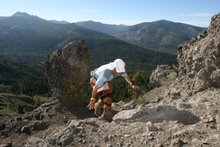Sorry to disappoint you, but my 50k race on Sunday was uneventful. No face plants, twisted ankles, nature calls in the middle of the wilderness, or alike. Just 12 times around a 2.6 mile loop consisting of dirt roads and relatively easy single-track trails.
I couldn’t convince wife and son to travel the 3 hours to NJ to crew for me, so I “recruited” the aid station folks to do it for me. I was carrying two water bottles, so after the first loop I left one at the aid station and asked the volunteers to fill it with water for my pick-up on the next loop. Sure enough, the filled water bottle was waiting for me at the table. So, I left them with an empty one, politely asking them to repeat the task. It only took five or six loops until they got the crewing just right and were actually waiting with my bottle raised in their hands, ready to perform the switch. The process of training my recruits kept me amused during the long run.
Overall, it was an excellent training run. Got to test my hydration and electrolyte calculations (1 ½ liters of water per hour with 1000 mg of sodium per liter of water), nutrition (100 calories every half-hour via GU’s), and general gear (just one small blister). Even the speed of my one pit stop improved greatly, thanks to a friend’s recommendation for baby wipes.
I finished just under 4 hours and 15 minutes, which is a little over 8 minute miles for more than 31 miles. I’m happy. Maybe the next one will be more entertaining.
Strength Training
You can get away without strength training for marathons and below, but don't try an ultra without adding strength training (i.e. weights) to your training regimen. Lower Body is important, but so is upper body (it will help keep you running straight after many hours) and, most important, core strength.
I do strength training twice a week about one hour each time. I started with low weights and high reps (2 sets of 20-25 reps per exercise) but have now reduced the number of reps and increased the weight (to increase power).
Here is the routine recommended to me by the folks at UC Davis for Lower Body Strength (Click to enlarge):

And here is the routine for Upper Body Strength:
(Click to enlarge)

And, most important, here is the routine for Core Strength:
(Click to enlarge)

My routine is a little different, but fairly similar to the above.
I do strength training twice a week about one hour each time. I started with low weights and high reps (2 sets of 20-25 reps per exercise) but have now reduced the number of reps and increased the weight (to increase power).
Here is the routine recommended to me by the folks at UC Davis for Lower Body Strength (Click to enlarge):

And here is the routine for Upper Body Strength:
(Click to enlarge)

And, most important, here is the routine for Core Strength:
(Click to enlarge)

My routine is a little different, but fairly similar to the above.
UC Davis Sports Performance Program
I recently visited the UC Davis Sports Performance Center in Sacramento, California (2805 J Street, Suite 300, Zip 95816, Phone:916-734-6805) to get tested for V02max and Lactate. The purpose of these tests is to evaluate your condition and determine your optimal training zones. Two tests which, theoretically, should give you the same results. VO2 Max Test evaluates the utilization of oxygen by your body. Lactate Test evaluates the accumulation of Lactic Acid in your blood. In my case, the results were identical for both tests.
The results break down the training zones by heart rate. Slow Endurance Zone gives the target heart-rate for recovery runs (easy 45 to 60 minute runs). Long Endurance Zone gives the target heart-rate range for Long Runs. Medium Endurance Zone gives the target heart-rate range for tempo runs. And Threshold Zone gives the target heart-rate range for interval training (with the associated target Interval Times also listed).
Here is how the results look like for the Lactate Test:
(Click on chart to enlarge)

And here is how it looks for the VO2 Max Test:
(Click on chart to enlarge)

Here is a chart on Lactate vs Speed and Heart Rate:
(Click on chart to enlarge)

Both tests, which include a mini physical, cost a total of $300+/-(combined). For the V02 Max, you'll be hooked up to a breathing apparatus while running on the treadmill for about 10 minutes (with the speed increasing about every minute). For the Lactate Test, they'll simply record your heart rate and analyze a corresponding drop of blood every 4 or 5 minutes while you run on a treadmill at increasing speeds.
It's well worth it, as it will help ensure that you are training at the correct intensity level for each type of run.
The results break down the training zones by heart rate. Slow Endurance Zone gives the target heart-rate for recovery runs (easy 45 to 60 minute runs). Long Endurance Zone gives the target heart-rate range for Long Runs. Medium Endurance Zone gives the target heart-rate range for tempo runs. And Threshold Zone gives the target heart-rate range for interval training (with the associated target Interval Times also listed).
Here is how the results look like for the Lactate Test:
(Click on chart to enlarge)

And here is how it looks for the VO2 Max Test:
(Click on chart to enlarge)

Here is a chart on Lactate vs Speed and Heart Rate:
(Click on chart to enlarge)

Both tests, which include a mini physical, cost a total of $300+/-(combined). For the V02 Max, you'll be hooked up to a breathing apparatus while running on the treadmill for about 10 minutes (with the speed increasing about every minute). For the Lactate Test, they'll simply record your heart rate and analyze a corresponding drop of blood every 4 or 5 minutes while you run on a treadmill at increasing speeds.
It's well worth it, as it will help ensure that you are training at the correct intensity level for each type of run.
Subscribe to:
Posts (Atom)
